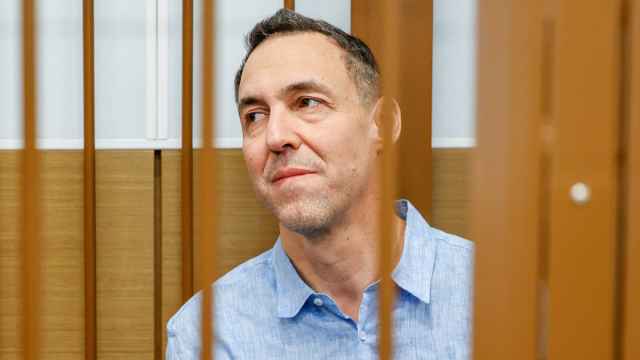
Felix Kugel
Vice-President Manpower Inc. (USA) and Managing Director of Russia & CIS
Even as we emerge from the global recession with unemployment continuing at high levels, the talent that drives business success is still in high demand. Indeed, 31 percent of employers worldwide have trouble filling key positions, according to Manpower’s fifth annual Talent Shortage Survey. That finding suggests that the “talent mismatch” — the inability to find the right skills in the right place at the right time — is a looming threat to all employers. Even those who are comfortable with where they are right now need to think hard about whether the talent plans that they have in place will generate the talent that is needed in this rapidly changing world of work.
In less than a decade, people with high-demand skills will be the scarcest resource for companies. Even now, the talent gap is slowing recovery and growth for many organizations. And as the global economy improves, that situation will only worsen.
Business leaders can and should meet this challenge head-on. Now is the time to devise and implement a workforce strategy that accounts for the increasing pace of change and drives corporate growth. Only those companies that manage to work out the right workforce strategy can win in this rapidly changing world of business.
So, what should business leaders, and HR leaders in particular, take into consideration when creating their own unique workforce strategies? What are the key priorities?
An aligned workforce strategy ensures that you have the talent you need to accelerate the execution of your business strategy. Its horizon should be long term, while dealing with urgent needs here and now. It must also be practical and include contingencies for such risks as labor actions.
To attract, develop, engage and retain the talent needed, a robust and well-documented workforce strategy will:
Be more comprehensive and more long-term focused than an annual talent plan
It will look at how you plan to attract, develop, engage and retain talent over the long term and include a view to what is changing on the market. It will also identify the implications to your business that will have an impact on talent demands.
Be focused on which work models will produce the best results for the organization
Consider what appropriate work models and workforce mix will be best for your organization. With contingent workers rising as a percentage of an organization’s total workforce and the rise of virtual work arrangements to increase flexibility, think about what combination will work for your company.
Be introspective to understand what people practices need to be updated
Consider how leadership behaviors need to change to engage, retain and unleash the potential of your workforce in contemporary ways.
Be inclusive by taking an outside-in view of talent sources
Consider where you will find the talent you need. Do the demographic data indicate that talent will be available where you are? How can you tap into different talent pools to meet your needs? Create agile talent strategies to attract, select, onboard, train and reskill staff in new ways.
Be clear where the organization can “build” rather than “buy”
A comprehensive workforce strategy will emphasize opportunities for up-skilling current employees, accelerate the development of others and build pipelines of “high potentials” at many levels across the current workforce. It may need to identify employees with skills adjacent to those that are needed, who can be trained to fill key positions with relative ease — an approach that we have dubbed “teachable fit.” It will also need to emphasize building capabilities, particularly of high-potential individuals and key contributors, regardless of whether they are permanent or contingent employees. This remains a weak spot for many organizations: According to Manpower’s newest findings, more than one-third of employees say their organizations have not made training and development a priority. One-fifth say that training and development opportunities are either inadequate for achieving the company’s business strategy, or are not provided at all.
Aligning workforce strategy to business strategy is not a “once and done” activity. Just as with their business strategy, leaders must regularly revisit and challenge their workforce strategy for strategic alignment and accountability. This is an ongoing process of assessing, forecasting and adapting as business needs change, employees retire and new generations join the workforce, and should ensure that the workforce strategy accelerates the organization’s execution of the business strategy. It is the HR leader’s role to facilitate this process with leadership. Until HR leaders consider the impact of external forces, such as demographic trends, combined with internal forces such as the demography of current workforce, on their company’s ability to execute its business strategy, efforts will only be as good as tactical plans and actions that are hit or miss. The organizations that get this right will have the competitive edge.
A Message from The Moscow Times:
Dear readers,
We are facing unprecedented challenges. Russia's Prosecutor General's Office has designated The Moscow Times as an "undesirable" organization, criminalizing our work and putting our staff at risk of prosecution. This follows our earlier unjust labeling as a "foreign agent."
These actions are direct attempts to silence independent journalism in Russia. The authorities claim our work "discredits the decisions of the Russian leadership." We see things differently: we strive to provide accurate, unbiased reporting on Russia.
We, the journalists of The Moscow Times, refuse to be silenced. But to continue our work, we need your help.
Your support, no matter how small, makes a world of difference. If you can, please support us monthly starting from just $2. It's quick to set up, and every contribution makes a significant impact.
By supporting The Moscow Times, you're defending open, independent journalism in the face of repression. Thank you for standing with us.
Remind me later.





